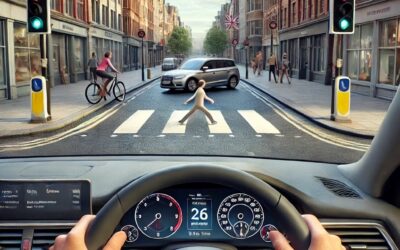At driving schools, we often get asked, “Is it true that automatic cars give you less control?” This question usually comes from learners who are trying to decide between automatic and manual lessons.
While automatic cars are easier to drive, many experienced manual drivers claim that automatics offer less control. In this article, we’ll explain where that opinion comes from — and what it means for new drivers in the UK.
Choosing between manual and automatic driving lessons is one of the first big decisions learner drivers face.
For new drivers, automatic cars are often seen as the easier option. But many experienced manual drivers will argue that automatics give them less control. So what does that really mean? And how does it affect your learning journey?
Let’s compare both types of cars from a practical driving perspective to help you decide which is right for you.
Understanding “Control” in Driving
Control in driving refers to how accurately and smoothly a driver can manage the car’s speed, acceleration, deceleration, and movement, especially in different road and traffic conditions.
Manual cars give the driver full control of gear selection and clutch movement. In automatics, gear changes happen automatically. This key difference can influence how the car responds in specific situations.
Where Manual Drivers Feel They Have More Control
Manual drivers often report the following:
1. Power When You Need It
In a manual car, the driver chooses when to change gear. If you need to accelerate quickly (for example, when joining a roundabout or overtaking), you can remain in a lower gear for extra power.
In many automatics—especially older or single-clutch systems—the car may decide to change gear at the wrong moment, causing a delay in acceleration.
2. Smooth Deceleration and Engine Braking
Manual drivers can use the gears to help slow the car down in a predictable way, making braking more consistent.
In automatics, the system may change down unexpectedly, creating uneven engine braking—especially noticeable for passengers.
3. Precision at Low Speeds
Manual clutch control allows for extremely slow and steady movement—ideal for parking or tight turns.
In automatics, clutch engagement is controlled by the car. This can make very slow driving feel slightly jerky or less predictable.
When Automatic Gives the Advantage
That said, automatic cars come with major benefits that appeal to many learners:
1. No Clutch, No Gear Changes
This reduces stress and allows you to focus more on steering, speed, and road awareness—particularly useful in busy city driving or for nervous beginners.
2. Simpler Hill Starts
Most modern automatics include hill-hold assist, preventing the car from rolling backwards when moving off on a slope — something many learners struggle with in a manual.
3. Less Fatigue
In stop-start traffic or long commutes, automatic driving can be more relaxing and comfortable, as you don’t have to constantly change gears.
Manual Mode in Automatics: A Useful Feature
Many automatic cars now include a manual mode, allowing the driver to control gear changes using a lever or steering-wheel paddles. This feature improves timing and smoothness, particularly on hills or in heavy traffic.
It gives you more control, but not quite as much as a full manual car, where you’re in charge of the clutch as well.
Comparing Transmission Types in Automatic Cars
There are several kinds of automatic gearboxes in the UK, each offering a slightly different driving feel:
Transmission Type | Features | Control Feel |
Robotised Manual (AMT) | Mechanically similar to a manual, with robotic gear changes | Slightly jerky, slower response |
Torque Converter | Traditional automatic, smooth operation | Comfortable, reliable at low speeds |
CVT (Continuously Variable Transmission) | No fixed gears, adjusts seamlessly | Smooth but can sound unusual under load |
e-CVT (Hybrid) | Used in hybrid cars, smooth electric-style driving | High control, responsive |
Dual-Clutch (DCT) | Quick gear changes, sporty feel | Fast and smooth, often used in premium models |
So, Which Should You Learn In?
Choose MANUAL if:
- You want the full UK driving licence, with the ability to drive both manual and automatic cars.
- You’re confident with multitasking and want maximum control.
- You want to future-proof your driving (e.g., renting cars abroad, driving older vehicles).
Choose AUTOMATIC if:
- You want to pass your test faster or with less stress.
- You find clutch and gear control difficult.
- You mainly plan to drive in cities or towns.





0 Comments